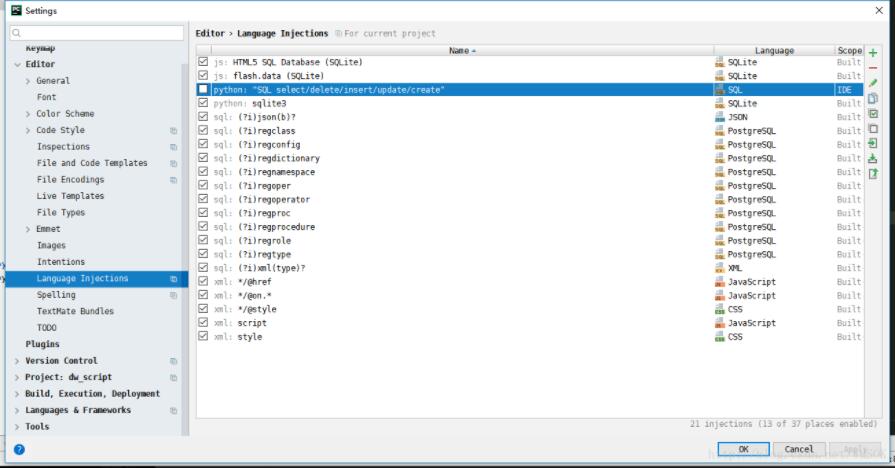python中将阿拉伯数字转换成中文的实现代码
复制代码 代码如下:
#!/usr/bin/python
#-*- encoding: utf-8 -*-
import types
class NotIntegerError(Exception):
pass
class OutOfRangeError(Exception):
pass
_MAPPING = (u'零', u'一', u'二', u'三', u'四', u'五', u'六', u'七', u'八', u'九', )
_P0 = (u'', u'十', u'百', u'千', )
_S4, _S8, _S16 = 10 ** 4 , 10 ** 8, 10 ** 16
_MIN, _MAX = 0, 9999999999999999
def _to_chinese4(num):
'''''转换[0, 10000)之间的阿拉伯数字
'''
assert(0 <= num and num < _S4)
if num < 10:
return _MAPPING[num]
else:
lst = [ ]
while num >= 10:
lst.append(num % 10)
num = num / 10
lst.append(num)
c = len(lst) # 位数
result = u''
for idx, val in enumerate(lst):
if val != 0:
result += _P0[idx] + _MAPPING[val]
if idx < c - 1 and lst[idx + 1] == 0:
result += u'零'
return result[::-1].replace(u'一十', u'十')
def _to_chinese8(num):
assert(num < _S8)
to4 = _to_chinese4
if num < _S4:
return to4(num)
else:
mod = _S4
high, low = num / mod, num % mod
if low == 0:
return to4(high) + u'万'
else:
if low < _S4 / 10:
return to4(high) + u'万零' + to4(low)
else:
return to4(high) + u'万' + to4(low)
def _to_chinese16(num):
assert(num < _S16)
to8 = _to_chinese8
mod = _S8
high, low = num / mod, num % mod
if low == 0:
return to8(high) + u'亿'
else:
if low < _S8 / 10:
return to8(high) + u'亿零' + to8(low)
else:
return to8(high) + u'亿' + to8(low)
def to_chinese(num):
if type(num) != types.IntType and type(num) != types.LongType:
raise NotIntegerError(u'%s is not a integer.' % num)
if num < _MIN or num > _MAX:
raise OutOfRangeError(u'%d out of range[%d, %d)' % (num, _MIN, _MAX))
if num < _S4:
return _to_chinese4(num)
elif num < _S8:
return _to_chinese8(num)
else:
return _to_chinese16(num)
if __name__ == '__main__':
print to_chinese(9000)
把金额小写转换成大写的Python代码
功能将小于十万亿元的小写金额转换为大写
代码
复制代码 代码如下:
def IIf( b, s1, s2):
if b:
return s1
else:
return s2
def num2chn(nin=None):
cs =
('零','壹','贰','叁','肆','伍','陆','柒','捌','玖','◇','分','角','圆','拾','佰','仟',
'万','拾','佰','仟','亿','拾','佰','仟','万')
st = ''; st1=''
s = '%0.2f' % (nin)
sln =len(s)
if sln >; 15: return None
fg = (nin<1)
for i in range(0, sln-3):
ns = ord(s[sln-i-4]) - ord('0')
st=IIf((ns==0)and(fg or (i==8)or(i==4)or(i==0)), '', cs[ns])
+ IIf((ns==0)and((i<>;8)and(i<>;4)and(i<>;0)or fg
and(i==0)),'', cs[i+13])
+ st
fg = (ns==0)
fg = False
for i in [1,2]:
ns = ord(s[sln-i]) - ord('0')
st1 = IIf((ns==0)and((i==1)or(i==2)and(fg or (nin<1))), '', cs[ns])
+ IIf((ns>;0), cs[i+10], IIf((i==2) or fg, '', '整'))
+ st1
fg = (ns==0)
st.replace('亿万','万')
return IIf( nin==0, '零', st + st1)
if __name__ == '__main__':
num = 12340.1
print num
print num2chn(num)


